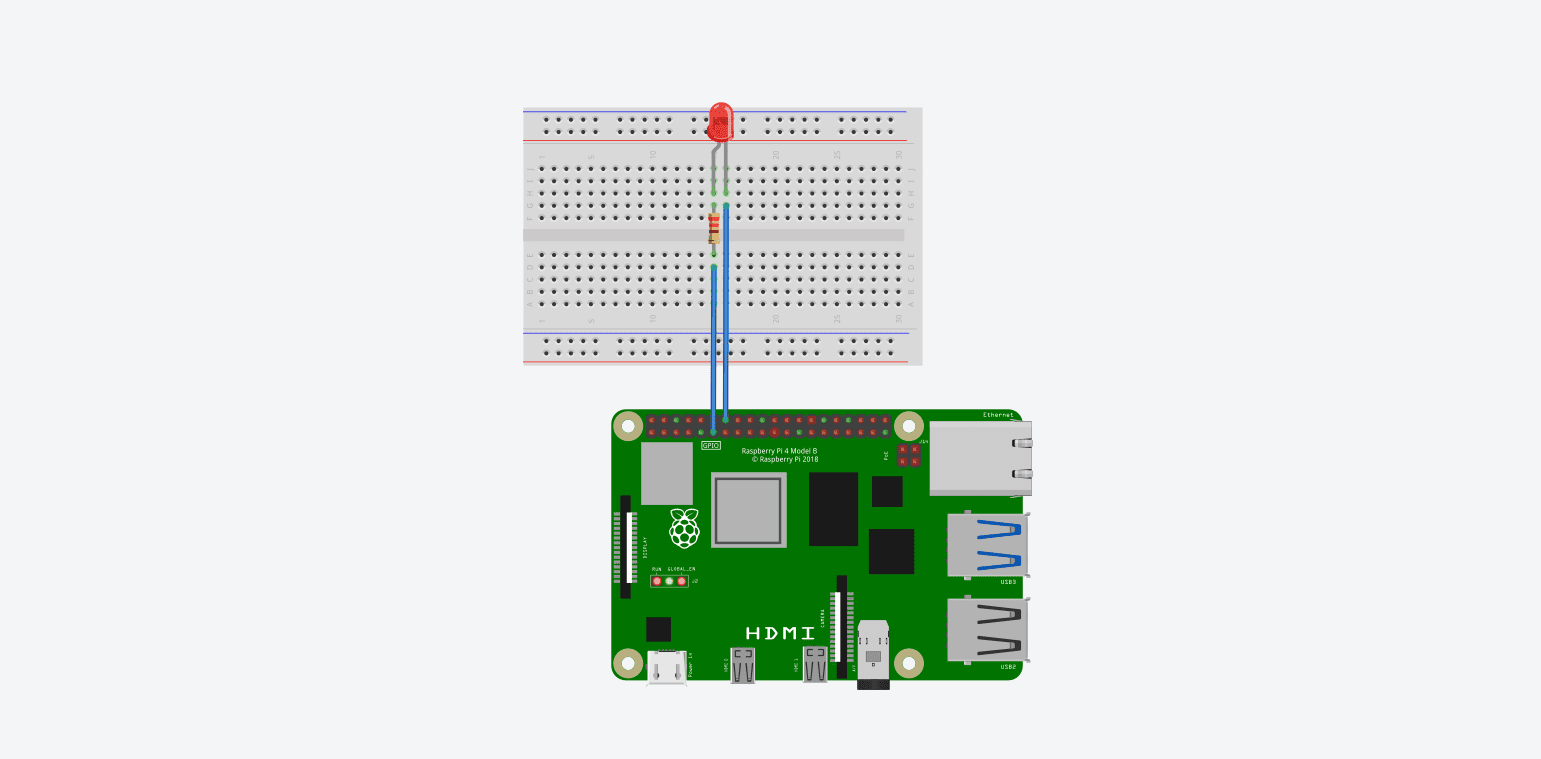The Linux file system is one of the core components that define the operating system’s structure and functionality. Unlike Windows or macOS, Linux uses a hierarchical file system that starts at the root directory (/) and branches into various subdirectories. Understanding the Linux file system and mastering basic navigation commands are crucial skills for anyone working with Linux, whether you’re a beginner or an experienced user.
This guide will introduce you to the Linux file system’s layout and essential commands to navigate it. You’ll learn how to access, manipulate, and manage files and directories using the command line, providing you with a solid foundation for efficient Linux usage.
Understanding the Linux File System Structure
The Linux file system is organized into a tree-like hierarchy, with the root directory (/) at the top. Below the root, various subdirectories serve specific purposes. Here’s an overview of some key directories you will encounter:
/(Root Directory): The starting point of the Linux file system. All other directories and files branch off from here./home: Contains personal directories for each user. For instance, the home directory for a user namedjohnwould be/home/john./bin: Stands for “binary.” It contains essential user command binaries, such asls,cp, andmv, which are available to all users./etc: Holds configuration files for system and application settings. It’s where system administrators often modify settings./var: Contains variable files, such as logs, caches, and data files used by various system services./usr: Stands for “user.” This directory contains user-installed applications and their binaries, libraries, documentation, and source code./tmp: Used for temporary files created by applications or users. Files here are often deleted upon reboot./opt: Used for optional software packages that are not part of the standard file hierarchy./dev: Contains device files that represent hardware components, such as disks, USB devices, and printers.
Familiarity with these directories helps you understand where files and applications reside on your system, making it easier to troubleshoot issues or customize your Linux environment.
Navigating the File System with Basic Commands
To efficiently navigate the Linux file system, you need to understand some basic commands. These commands are executed in the terminal, which serves as a powerful interface for interacting with the operating system.
1. pwd – Print Working Directory
The pwd command displays the current directory you are working in. This is particularly useful when you are navigating deep within the file system and need to confirm your location.
pwdExample output:
/home/john/DocumentsThis output shows that you are currently in the Documents directory inside the john user’s home folder.
2. ls – List Directory Contents
The ls command lists the files and directories within your current location. It’s one of the most frequently used commands for viewing directory contents.
lsYou can use various options with ls to customize the output:
ls -l: Displays a detailed list, including file permissions, ownership, size, and modification date.ls -a: Lists all files, including hidden files (those starting with a dot.).ls -lh: Provides human-readable sizes, making it easier to understand file sizes in KB, MB, or GB.
Example:
ls -lhOutput:
total 12K
drwxrwxr-x 2 john john 4.0K Sep 15 10:00 Documents
-rw-rw-r-- 1 john john 1.2K Sep 15 09:50 file.txtThis output shows the contents of the current directory, along with details like file size and last modified date.
3. cd – Change Directory
The cd command is used to change your current directory. By specifying the path of the target directory, you can move between directories easily.
cd /home/john/DocumentsCommon uses of cd include:
cd ~: Navigates to your home directory.cd ..: Moves up one level to the parent directory.cd -: Switches back to the previous directory.
These shortcuts make navigation quick and efficient, allowing you to move through the file system without typing full paths repeatedly.
4. mkdir – Make Directory
The mkdir command creates a new directory. This is particularly useful when organizing files into specific folders.
mkdir new_folderThis command creates a directory named new_folder in your current location. You can also create nested directories by using the -p option:
mkdir -p projects/2024/codeThis command creates the entire path, including any missing intermediate directories.
5. rmdir and rm -r – Remove Directory
The rmdir command removes empty directories, while rm -r (recursive) removes directories along with their contents. Be cautious with rm -r as it permanently deletes files and directories.
rmdir empty_folder
rm -r full_folderThese commands allow you to manage directories and clean up your file system as needed.
Working with Files: Viewing and Manipulation Commands
Navigating directories is just the beginning; managing files within those directories is equally important. Here are some essential commands for handling files:
1. touch – Create a File
The touch command creates an empty file or updates the timestamp of an existing file. This command is handy for quickly creating placeholder files.
touch example.txtThis command creates a new file named example.txt in the current directory.
2. cp – Copy Files and Directories
The cp command copies files or directories from one location to another.
cp file.txt /home/john/Documents/Use the -r option to copy directories:
cp -r folder1 /home/john/Documents/3. mv – Move or Rename Files and Directories
The mv command moves files or directories to a new location, or it can rename them.
- Moving a file:
mv file.txt /home/john/Documents/- Renaming a file:
mv oldname.txt newname.txtAdvanced File and Directory Management Commands
After learning the basics of navigating and managing files in Linux, it’s time to explore more advanced commands that provide greater control and efficiency. These commands will help you handle permissions, search for files, and automate repetitive tasks, making you more proficient in managing the Linux file system.
1. rm – Remove Files
The rm command deletes files. It’s a powerful command that should be used with caution, as deleted files are not sent to a recycle bin but are permanently removed.
rm filename.txt- Use
rm -ito prompt before deleting each file, adding an extra layer of safety. - Use
rm -fto force delete files without confirmation, which is useful in scripts but should be handled carefully. - For directories and their contents, use
rm -r(recursive).
2. cat, less, and more – Viewing File Contents
To view the contents of a file, you can use commands like cat, less, and more. These commands are particularly useful when dealing with text files, configuration files, or scripts.
cat(Concatenate and Display): Outputs the entire content of a file to the terminal.
cat filename.txtless and more: These commands allow you to view the content page by page, which is especially helpful for longer files.
less filename.txt
more filename.txtUsing the less command, you can navigate through the file using the arrow keys, space to scroll down, and q to quit. It’s preferable to cat for large files as it doesn’t load the entire file into memory at once.
3. head and tail – Viewing Beginning or End of Files
The head and tail commands allow you to view the first or last part of a file, respectively. This is useful for checking log files or quickly viewing file contents without opening the entire file.
head: Displays the first ten lines of a file by default.
head filename.txttail: Displays the last ten lines of a file by default. The-foption (follow) is commonly used withtailto monitor live updates in a file, such as logs.
tail -f logfile.txt4. chmod – Changing File Permissions
Linux file permissions control who can read, write, or execute files. The chmod command is used to change these permissions, giving you control over file access.
Permissions are represented by three types of actions (read, write, execute) and three classes of users (owner, group, others). Each action is represented numerically: 4 for read, 2 for write, and 1 for execute. To set permissions, add these values together.
For example, the permission 755 means:
- Owner: Read (4) + Write (2) + Execute (1) = 7
- Group: Read (4) + Execute (1) = 5
- Others: Read (4) + Execute (1) = 5
To apply this permission setting:
chmod 755 script.shFor more readable symbolic mode, chmod u+x filename.sh adds execute permission for the user (owner).
5. chown – Changing File Ownership
The chown command changes the owner and group of a file or directory. This is important for managing access and maintaining security on multi-user systems.
chown username:groupname filename.txtFor example, chown john:developers project/ changes the owner of the project directory to john and the group to developers.
Searching and Finding Files
Searching for files is a crucial skill, especially when working with complex directory structures. Linux provides powerful tools like find, locate, and grep to help you quickly locate and manipulate files.
1. find – Search for Files and Directories
The find command searches for files and directories based on various criteria, such as name, type, size, or modification date.
find /path -name "filename.txt"-name "filename.txt": Searches for files with the exact name.-type d: Finds directories only.-size +100M: Finds files larger than 100 MB.
Example: To find all .log files modified in the last 7 days in the /var/log directory:
find /var/log -name "*.log" -mtime -72. locate – Quick File Search
The locate command is a faster alternative to find as it uses a pre-built database of files. The database is updated periodically with the updatedb command.
locate filename.txtSince locate relies on an index, it is much quicker but may not find files created or moved since the last update.
3. grep – Search Within Files
The grep command searches for specific patterns within files. It’s invaluable for sifting through large files, log files, or code bases.
grep "search_term" filename.txtgrep -i: Case-insensitive search.grep -r "search_term" /path: Recursive search in a directory.grep -n "search_term" filename.txt: Displays line numbers where matches are found.
Example: To find all occurrences of “error” in log files within /var/log:
grep -i "error" /var/log/*.logManaging Processes and System Resources
Understanding how to manage system processes is essential for effective Linux system administration. Commands like ps, top, and kill are fundamental for monitoring and managing running applications.
1. ps – Display Current Processes
The ps command displays information about currently running processes. It’s useful for checking what applications are active and their resource usage.
ps auxThis command provides detailed information on all running processes, including user, CPU, and memory usage.
2. top – Monitor System Performance
The top command provides a real-time view of system resource usage, including CPU, memory, and swap space. It’s an essential tool for diagnosing performance issues.
tophtopis a more user-friendly version oftopwith an interactive interface. It can be installed with:
sudo apt install htop3. kill – Terminate Processes
The kill command stops a running process using its process ID (PID). To find the PID of a process, use ps or top.
kill 1234kill -9 PID: Forces termination if a process does not respond to a standard kill command.
Managing File Permissions and Ownership
Understanding and managing file permissions is a fundamental aspect of working in Linux. Permissions determine who can read, write, or execute a file, and they play a crucial role in system security and user access management.
File Permission Basics
Linux permissions are divided into three categories:
- Read (
r): Allows viewing the content of a file or listing a directory’s contents. - Write (
w): Allows modifying or deleting the content of a file or directory. - Execute (
x): Allows executing a file as a program or accessing a directory.
Permissions are set for three types of users:
- Owner (User): The person who owns the file.
- Group: A group of users who share access rights.
- Others: Everyone else who can access the system.
Permissions are displayed using symbolic notation (e.g., rwxr-xr--) or numeric notation (e.g., 755). Here’s how to interpret these permissions:
- Symbolic Notation:
rwxr-xr--- The first set (
rwx) applies to the owner. - The second set (
r-x) applies to the group. - The third set (
r--) applies to others.
- The first set (
- Numeric Notation: Each permission is assigned a number (
4for read,2for write,1for execute). Adding these values gives the permission level (e.g.,rwx= 7,r-x= 5,r--= 4). Thus,755means full access for the owner, read and execute for the group, and read for others.
Changing Permissions with chmod
The chmod command is used to modify file permissions. You can set permissions using either numeric or symbolic notation.
- Numeric Notation Example:
chmod 755 script.shThis command sets the file to be fully accessible by the owner (7), and readable and executable by the group and others (5 and 5).
- Symbolic Notation Example:
chmod u+x filename.sh- This adds execute permission for the user (
u), leaving group (g) and others (o) unchanged.
Changing Ownership with chown
The chown command changes the owner and group of a file or directory. This is crucial for managing access rights, especially in multi-user environments.
chown john:developers project/This command sets the owner of the project directory to john and the group to developers. Use sudo with chown if you are not the superuser but need to change file ownership.
Automating Tasks with Shell Scripting
Shell scripting is a powerful way to automate repetitive tasks in Linux, saving time and reducing the chance of errors. A shell script is simply a text file containing a sequence of commands that you would normally type in the terminal.
Creating Your First Shell Script
To create a shell script, follow these steps:
- Open a text editor like
nanoorvim.
nano myscript.sh- Start the script with the shebang (
#!) line, which tells the system which interpreter to use (usually Bash).
#!/bin/bash- Add your commands below the shebang line. For example:
#!/bin/bash
echo "Hello, World!"- Save the file and exit the editor. Make the script executable with
chmod:
chmod +x myscript.sh- Run your script:
./myscript.shUseful Commands in Shell Scripting
echo: Displays text or variables.read: Takes user input.if-else: Conditional statements for decision-making.for,while,until: Loop structures to repeat commands.
Example script with an if statement:
#!/bin/bash
read -p "Enter a number: " num
if [ $num -gt 10 ]; then
echo "The number is greater than 10."
else
echo "The number is 10 or less."
fiThis script prompts the user to enter a number and then checks if it’s greater than 10.
Working with Environment Variables
Environment variables are used to store data that can be used by the system and shell scripts. Common environment variables include PATH, HOME, and USER.
- Viewing Environment Variables:
printenv- Setting an Environment Variable:
export MY_VARIABLE="Hello"- Using Variables in Scripts:
#!/bin/bash
echo "The value of MY_VARIABLE is: $MY_VARIABLE"Understanding environment variables can significantly enhance the flexibility of your scripts, allowing you to manage dynamic data effectively.
Searching and Manipulating Text with grep, sed, and awk
Text manipulation is a key part of working with Linux, especially for log analysis, data processing, and system administration. Commands like grep, sed, and awk provide powerful ways to search and transform text data.
1. grep – Search for Patterns in Text
As discussed earlier, grep is used for searching within files. It’s an essential tool for quickly finding specific lines or patterns in large datasets.
grep "pattern" file.txt2. sed – Stream Editor for Text Manipulation
sed (Stream Editor) is used for finding and replacing text, filtering input, and modifying file contents directly from the command line.
- Replacing Text:
sed 's/old/new/g' file.txt- This command replaces all occurrences of “old” with “new” in the file.
- Deleting Lines:
sed '/pattern/d' file.txt- This command deletes lines containing the specified pattern.
3. awk – Text Processing and Data Extraction
awk is a powerful programming language used for pattern scanning and processing. It is highly useful for extracting specific fields from text files or processing structured data like CSV files.
- Extracting Columns:
awk '{print $1, $3}' file.txt- This command prints the first and third columns of each line in the file.
- Calculating Averages:
awk '{sum += $1} END {print "Average:", sum/NR}' numbers.txt- This script calculates the average of numbers in the first column.
Conclusion
Navigating the Linux file system and mastering its essential commands is a vital skill for any Linux user, from beginners to advanced administrators. This guide has covered the basic and advanced commands needed to efficiently manage files, directories, and system processes. By understanding file permissions, ownership, shell scripting, and text manipulation tools, you are well-equipped to take full control of your Linux environment.
As you continue to explore Linux, practice using these commands regularly, and experiment with scripting to automate tasks. The Linux command line offers immense power and flexibility, and with these foundational skills, you are on your way to becoming proficient in managing any Linux system.








